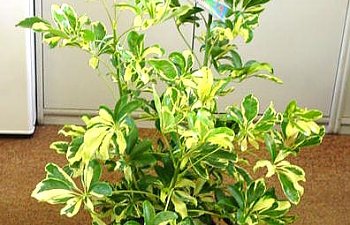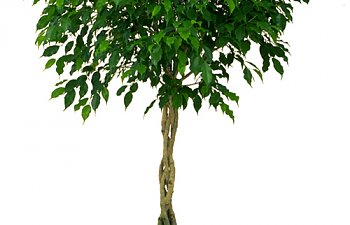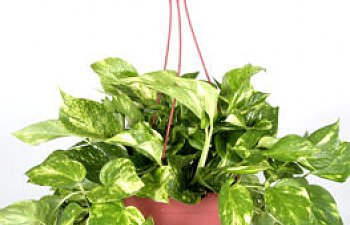Chameleon care basics
CHAMELEON ENCLOSURE
The first thing you will need is a well ventilated enclosure. Glass aquarium tend to have stagnant air and the constant moisture can cause the chameleon to become very ill. A well ventilated enclosure will help maintain a proper humidity cycle. A good example of a well ventilated cage is an all screens enclosure like this one which come in different size to accommodate different kinds of chameleons
http://lllreptile.com/store/catalog...een/-/24-x-24-x-48-inch-aluminum-screen-cage/
SUITABLE SIZE CAGE
The size of the cage will depend on the Chameleon’s age & species. I recommend putting an adult veiled or panther in a cage no smaller than 24"x24"x48". Each chameleon should have there own cage. DO NOT put more than one chameleon per cage because one of them will be submissive and it will only lead to problems, not even male and female together. Jacksons and other smaller chameleons will thrive in smaller enclosures but I try to give the chameleon the biggest enclosure possible if I cant free-range him/her
CHAMELEON FURNITURE
In my opinion non-toxic live plants and branches are a necessity. Having a live plant will help in many ways including giving drinking surface, help keep humidity at stable conditions, providing security, and climbing surface. Branches are important too because they provide the chameleons "highways" to patrol his territory
Some of the most commonly used plants for chameleon cages are:
Schefflera (Dwarf umbrella tree)

Ficus benjamina (Weeping fig)

Pothos (Philodendron)

All three are non-toxic and can be purchased at your local hardware/garden/nursery store.
BRANCH PLACEMENT
Branch placement is important because the chameleons is cold-blooded and will need to thermo-regulate by moving toward or away from the heat source so it is important to have branches high, low, & in between
LIGHTING/HEATING
Your next focus is appropriate heating and lighting for your chameleon. Chameleons need two specific things when it comes to heating and lighting. The first is a basking bulb to provide a heat source. The second is a UVB light source to help your chameleon produce the proper amount of D3.
A UVB bulb I highly recommend is zoo-med repti-sun 5.0. I would accompany that bulb with a 6500 K bulb for full spectrum lighting and for the plants
The basking lamp should be located to one side of the chameleon’s cage. Place some vines and branches about 6 – 10 inches under the bulb. For smaller enclosures and a lower watt bulb, place the branches 3-5 inches from the bulb. Your chameleon will suffer burns if he/she gets too close to the basking light. Place the fluorescent bulb along the top of the cage. Remember, the fluorescent bulbs are only effective up to 12 inches. Make sure your chameleon can get close enough to the bulb to absorb the bulb’s UVB.
But remember there is no better way to provide UVB rays to your cham than natural sunlight so whenever the weather is permitting take your cham outside to bask in the natural sun and you will see improvement in your chameleons color, attitude, and over all health
CHAMELEON HYDRATION
Chameleons do not drink from standing water. They only drink water by licking the drops off leaves. The most common method used in captivity is misting. Another good method is called the dripper. This method can be achieved by poking a small hole in the bottom of a cup and placing it on the top of the enclosure. The best method would be an automatic misting system such as mist-king.
It is important to mist your cage and plants at least 3 times per day. This will help keep the humidity level up, and give your chameleon a chance to drink. Most chameleons will be scared of the water when being misted so It is better to use hot water because the temps will dramatically decrease when misted the water will feel luke warm and they will enjoy the water more.
Automatic misting systems are a much better way to go. They are by far the best way to hydrate a chameleon. They also solve many problems associated with drippers and offer the benefit of hands-free watering. The biggest advantage is that a misting system can prevent many health problems associated with over and under watering.
Chameleons DO NOT drink from water bowls for they cannot recognize standing water. Waterfalls are bad for chameleons because of there tendency to want to drop their feces there.
FEEDING & NUTRITION
A varied diet is very important to a chameleon’s health as it helps balance their nutrition and prevents hunger strikes. A good choice of feeders include:
gut-loaded crickets
silkworms
gut-loaded roaches
phoenix worms
CB grass-hoppers
and occasional treats which include:
CB flies
hornworms
superworms
butterworms
moths
isopods
phasmids
etc.
GUTLOADING
Your feeders should be well fed themselves to promote a well balanced diet. Remember that what ever goes into your feeders will go into your cham so if you feed feces to crickets and feed your cham those crickets then you are giving your cham feces pretty much, so wold you rather feed off crickets fed on feces or various healthy vegetables?? It is important to provide your feeders with a diet of various leafy green vegetables, certain grass, and minimal fruits such as:
turnip greens
mustard greens
collard greens
dandelion greens
alfalfa grass
oat grass
wheat grass
chia grass
carrots
squash
organic cereals
spirulina
bee pollen
blueberries
strawberries
etc.
this is called gut-loading
SUPPLEMENTATION
In addition to providing your feeders with the appropriate food, you’ll need to occasionally dust them with vitamin and mineral supplements just before feeding them to your chameleon. Vitamin supplements should be used less often than calcium mineral supplements. But no supplementation can replace the importance of gut-loading
CHAMELEON ENCLOSURE
The first thing you will need is a well ventilated enclosure. Glass aquarium tend to have stagnant air and the constant moisture can cause the chameleon to become very ill. A well ventilated enclosure will help maintain a proper humidity cycle. A good example of a well ventilated cage is an all screens enclosure like this one which come in different size to accommodate different kinds of chameleons
http://lllreptile.com/store/catalog...een/-/24-x-24-x-48-inch-aluminum-screen-cage/
SUITABLE SIZE CAGE
The size of the cage will depend on the Chameleon’s age & species. I recommend putting an adult veiled or panther in a cage no smaller than 24"x24"x48". Each chameleon should have there own cage. DO NOT put more than one chameleon per cage because one of them will be submissive and it will only lead to problems, not even male and female together. Jacksons and other smaller chameleons will thrive in smaller enclosures but I try to give the chameleon the biggest enclosure possible if I cant free-range him/her
CHAMELEON FURNITURE
In my opinion non-toxic live plants and branches are a necessity. Having a live plant will help in many ways including giving drinking surface, help keep humidity at stable conditions, providing security, and climbing surface. Branches are important too because they provide the chameleons "highways" to patrol his territory
Some of the most commonly used plants for chameleon cages are:
Schefflera (Dwarf umbrella tree)

Ficus benjamina (Weeping fig)

Pothos (Philodendron)

All three are non-toxic and can be purchased at your local hardware/garden/nursery store.
BRANCH PLACEMENT
Branch placement is important because the chameleons is cold-blooded and will need to thermo-regulate by moving toward or away from the heat source so it is important to have branches high, low, & in between
LIGHTING/HEATING
Your next focus is appropriate heating and lighting for your chameleon. Chameleons need two specific things when it comes to heating and lighting. The first is a basking bulb to provide a heat source. The second is a UVB light source to help your chameleon produce the proper amount of D3.
A UVB bulb I highly recommend is zoo-med repti-sun 5.0. I would accompany that bulb with a 6500 K bulb for full spectrum lighting and for the plants
The basking lamp should be located to one side of the chameleon’s cage. Place some vines and branches about 6 – 10 inches under the bulb. For smaller enclosures and a lower watt bulb, place the branches 3-5 inches from the bulb. Your chameleon will suffer burns if he/she gets too close to the basking light. Place the fluorescent bulb along the top of the cage. Remember, the fluorescent bulbs are only effective up to 12 inches. Make sure your chameleon can get close enough to the bulb to absorb the bulb’s UVB.
But remember there is no better way to provide UVB rays to your cham than natural sunlight so whenever the weather is permitting take your cham outside to bask in the natural sun and you will see improvement in your chameleons color, attitude, and over all health
CHAMELEON HYDRATION
Chameleons do not drink from standing water. They only drink water by licking the drops off leaves. The most common method used in captivity is misting. Another good method is called the dripper. This method can be achieved by poking a small hole in the bottom of a cup and placing it on the top of the enclosure. The best method would be an automatic misting system such as mist-king.
It is important to mist your cage and plants at least 3 times per day. This will help keep the humidity level up, and give your chameleon a chance to drink. Most chameleons will be scared of the water when being misted so It is better to use hot water because the temps will dramatically decrease when misted the water will feel luke warm and they will enjoy the water more.
Automatic misting systems are a much better way to go. They are by far the best way to hydrate a chameleon. They also solve many problems associated with drippers and offer the benefit of hands-free watering. The biggest advantage is that a misting system can prevent many health problems associated with over and under watering.
Chameleons DO NOT drink from water bowls for they cannot recognize standing water. Waterfalls are bad for chameleons because of there tendency to want to drop their feces there.
FEEDING & NUTRITION
A varied diet is very important to a chameleon’s health as it helps balance their nutrition and prevents hunger strikes. A good choice of feeders include:
gut-loaded crickets
silkworms
gut-loaded roaches
phoenix worms
CB grass-hoppers
and occasional treats which include:
CB flies
hornworms
superworms
butterworms
moths
isopods
phasmids
etc.
GUTLOADING
Your feeders should be well fed themselves to promote a well balanced diet. Remember that what ever goes into your feeders will go into your cham so if you feed feces to crickets and feed your cham those crickets then you are giving your cham feces pretty much, so wold you rather feed off crickets fed on feces or various healthy vegetables?? It is important to provide your feeders with a diet of various leafy green vegetables, certain grass, and minimal fruits such as:
turnip greens
mustard greens
collard greens
dandelion greens
alfalfa grass
oat grass
wheat grass
chia grass
carrots
squash
organic cereals
spirulina
bee pollen
blueberries
strawberries
etc.
this is called gut-loading
SUPPLEMENTATION
In addition to providing your feeders with the appropriate food, you’ll need to occasionally dust them with vitamin and mineral supplements just before feeding them to your chameleon. Vitamin supplements should be used less often than calcium mineral supplements. But no supplementation can replace the importance of gut-loading
